


Reading Eggs or Fast Phonics? Which Reading Program to Use for Students

When it comes to choosing between Reading Eggs or Fast Phonics, it all comes down to your school’s phonics approach. In this article, we’ll be sharing a detailed explanation of both programs, so you can make the most informed decision.
Let’s start with Reading Eggs, the reading program teachers know and love.
Reading Eggs: A structured literacy approach
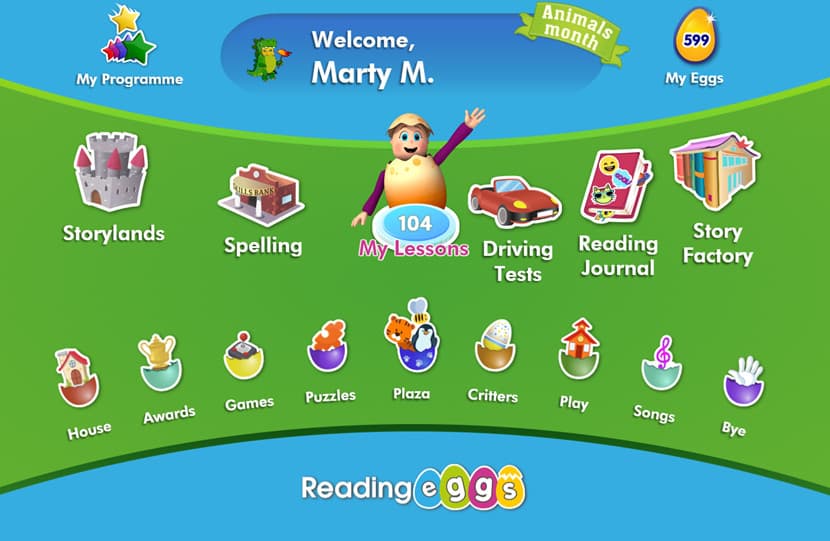
Designed for early learners from pre-K through Year 2, Reading Eggs uses a structured approach that is built on research that covers the five elements of reading success.
At its core, the program features twelve learning maps, consisting of ten lessons and an end-of-lesson quiz. After taking a placement test, students embark on an exciting journey, working their way through 120 sequenced lessons.
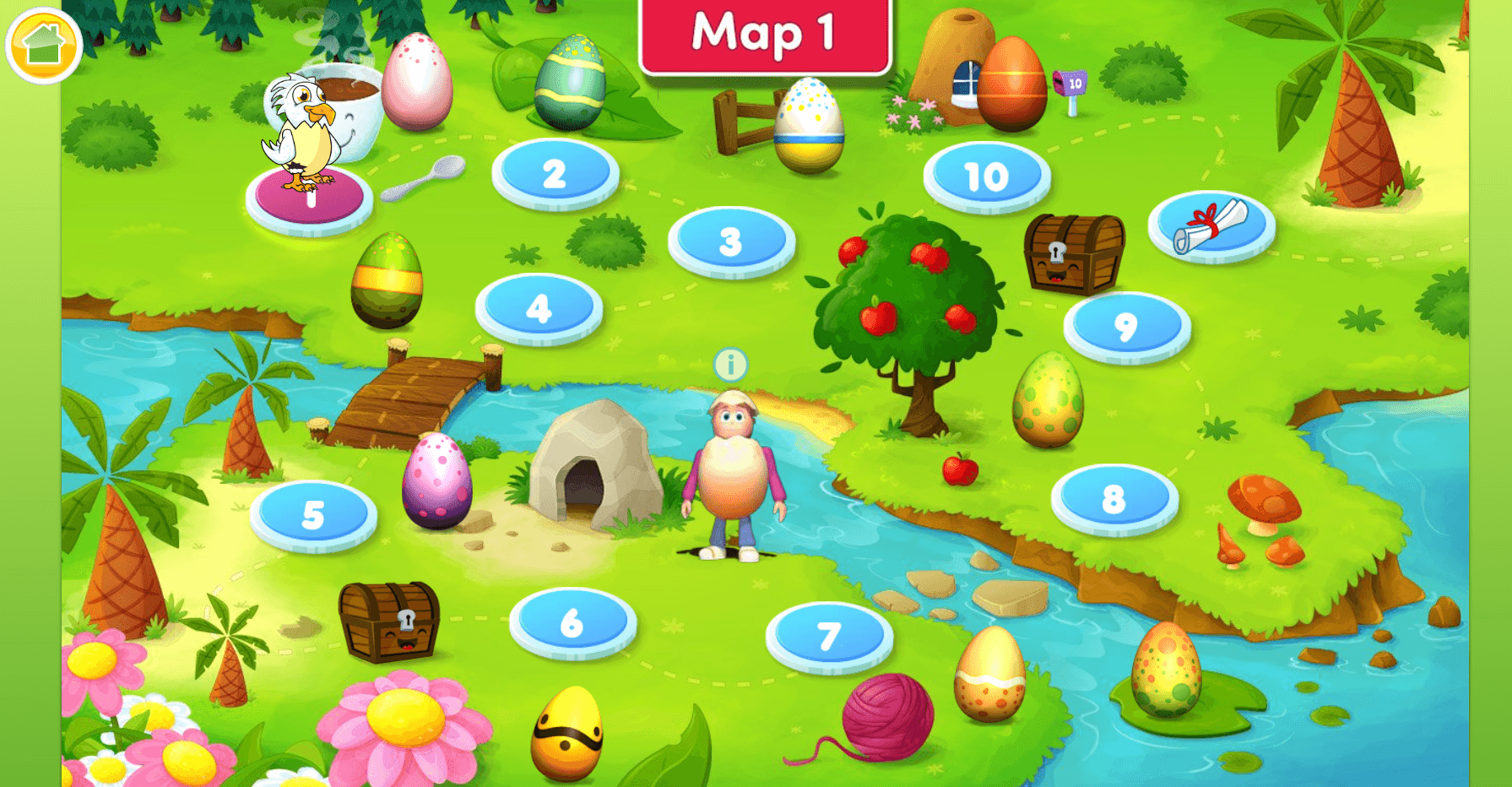
Once students have completed all ten lessons, they take an end-of-lesson quiz, before moving on to the next map.
Each lesson is packed with interactive videos and activities to develop important early reading skills such as letter-sound correspondence, letter identification, onset and rime activities, word families, segmenting and blending and high-frequency sight words.
As your little Eggsplorers progress through the lessons in class, they also learn how to construct sentences, use picture clues to help them read and build their vocabulary and reading fluency.

A picture match activity in Reading Eggs Map 2, Lesson 15.
Furthermore, the program comes with other fun features to build strong reading skills:
The Playroom: 120+ activities including rhymes and songs to develop phonemic awareness
Driving Test racing games: Fun reading and literacy skills assessments
Spelling Skills Bank: 96 lessons focusing on word families and segmentation
Story Factory: Dedicated area to promote early writing skills
Storylands: Scaffolded comprehension activities
Reading Journal: An interactive record of books read in the Library, encouraging reading for pleasure
The Library (accessible through Reading Eggspress): Over 3,500 books with a broad selection of fiction and nonfiction titles
If you’re looking for a highly structured approach – then Reading Eggs makes a great starting point for early readers.
After using Reading Eggs in my class, students are enjoying reading more. They are able to select books that suit their learning ability and are motivated by rewards given after completing levels and quizzes. I regularly use the teacher resource section for whole class activities and to plan lessons based on my students' needs.” – Stephanie Wilson, O'Sullivan Beach Primary School
Don’t miss out on this multi-award winning program. Jumpstart your students' reading success today!
But what if you’re looking for a more explicit and systematic phonics approach? Or if you have students with core learning gaps in their phonics knowledge?
Fast Phonics: A Systematic Synthetic Phonics program
Fast Phonics (part of the Reading Eggs full suite) is a fast-paced and phonics-first program that follows the systematic synthetic phonics approach. If your school uses explicit phonics instruction to teach students how to read, then Fast Phonics is the perfect phonics resource.
Designed for K–2 students, there are hundreds of phonics activities and teaching resources to transform your classroom into an engaging phonics learning environment. It’s also suitable for older students with core learning gaps in their reading knowledge.
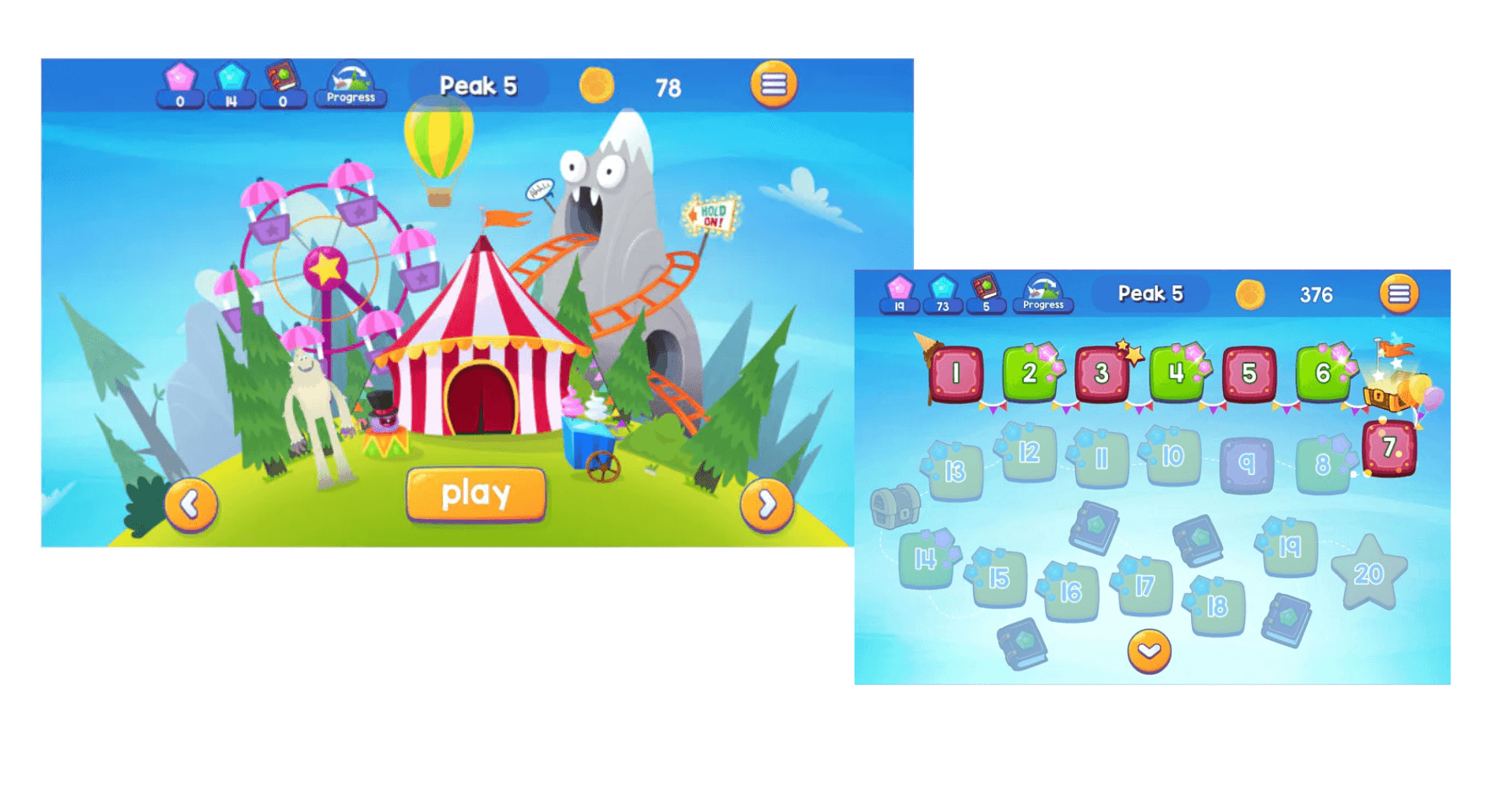
Immersed in a snow-capped Yeti world, students embark on a systematic learning pathway and work their way through 20 fun-filled levels known as Peaks. There are up to 24 parts in each level, with each part focusing on a set of letters and sounds in a sequenced order, aligned to the Letters and Sounds phases.
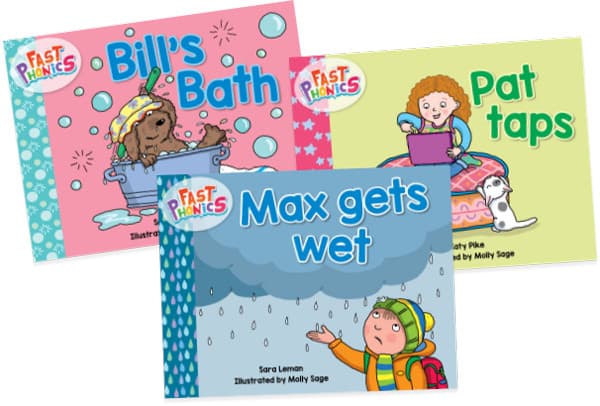
Fast Phonics decodable readers are books that match the words taught in each corresponding Peak. For example, the book ‘Pat taps’ aligns to Peak 1, focusing on the phonemes s, a, t, and p (Phase 2 of Letter and Sounds).
Students are also presented with phonics decodable readers at each Peak. These are books that only contain words with the letters and sounds students have learned in previous Peaks. At the end of each Peak, there is a quiz to assess their phonics understanding, before they can move to the next one.
"The fun and rewarding elements of Fast Phonics motivate and boost children's confidence leading to excellent progression in key synthetic phonics skills, like segmenting and blending." – Harewood Primary School
Try Fast Phonics today!
A Fast Phonics school trial comes with an abundance of teaching resources, plus over 400 engaging and rewarding phonics lessons for beginning readers.
Reading Eggs vs Fast Phonics
The key difference between both programs is their approach to reading instruction.
Reading Eggs takes a structured approach, often using a combination of analytic phonics and onset/rime. Each letter of the alphabet is introduced in its own lesson with a focus on reinforcing letter‑sound relationships and highlighting the alphabetic principle.
The structured sequence of instructional activities includes rhymes, alliteration, breaking words into syllables, phonemic segmentation and manipulation tasks.
Core skills taught in Reading Eggs | Core skills taught in Fast Phonics |
- Letter identification - Focus on initial sounds - Letter-sound correspondence - Analytic phonics and onset/rime activities - Rhyming words - Using picture clues - High-frequency sight words - Sentence construction - Vocabulary building - Fluency - Comprehension - Spelling | - Grapheme-phoneme Correspondence (GPCs) - Decoding - Blending - Segmenting - Syllable manipulation - Fluency - Automaticity - Tricky words - Pseudo-words - Comprehension
|
For example, in Reading Eggs Maps 1–4, students learn the sounds and names of letters, reading their first sight words, such as 'the', ‘I’, ‘and’, ‘is’ and ‘see’. They also learn the essential phonics skills needed to read three-letter words such as ‘cat’, ‘fan’ and ‘Sam’. Students are also taught to use picture cues to help them read words.
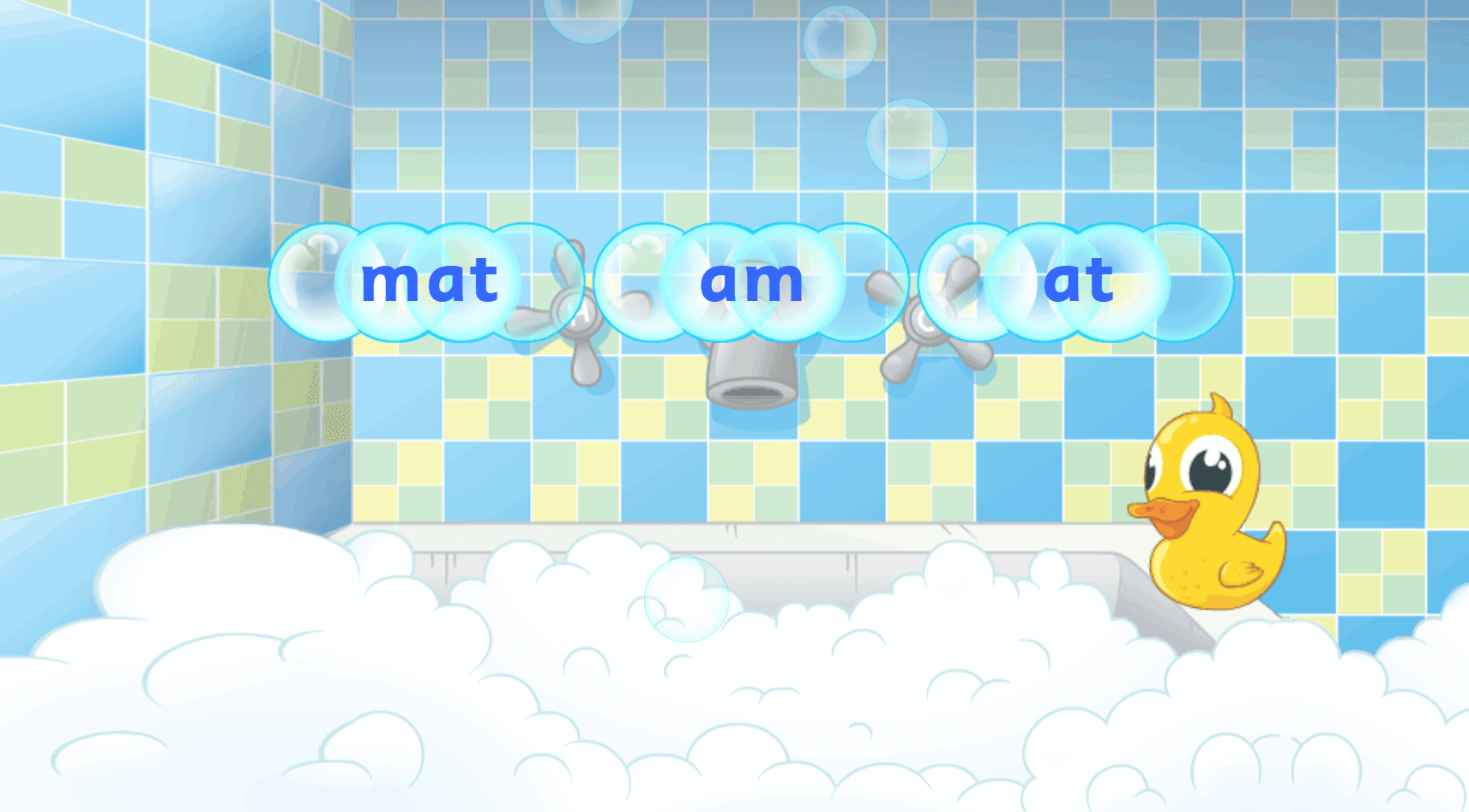
A blending activity in Reading Eggs Map 1, Lesson 5. Here, students are prompted to say each sound before saying the word on screen.
In Fast Phonics, students learn to identify grapheme-phoneme correspondences (GPC) in short, snappy sessions, according to the Letters and Sounds phases.
Each lesson uses animations to explain either a reading strategy or introduce a phoneme, digraph, trigraph or split digraph, where students learn to read by blending phonemes from left to right, ‘all through the word’.
The program adopts a sequential progression from simple to more complex phonics knowledge and skills and covers major GPCs from the get-go.
Students are taught to identify and blend sounds to decode words with consonant-vowel-consonant (CVC) patterns, before moving on to more complex strategies such as syllable manipulation.
For example, there are animations and activities in Fast Phonics Peak 1 to quickly and explicitly introduce the sounds /s/, /a/, /t/ and /p/. One of the activities ‘Stretch It Out’, teaches students to identify individual phonemes and then to blend all the way through the word to decode 'tap', 'sat', 'pat' and 'sap'.
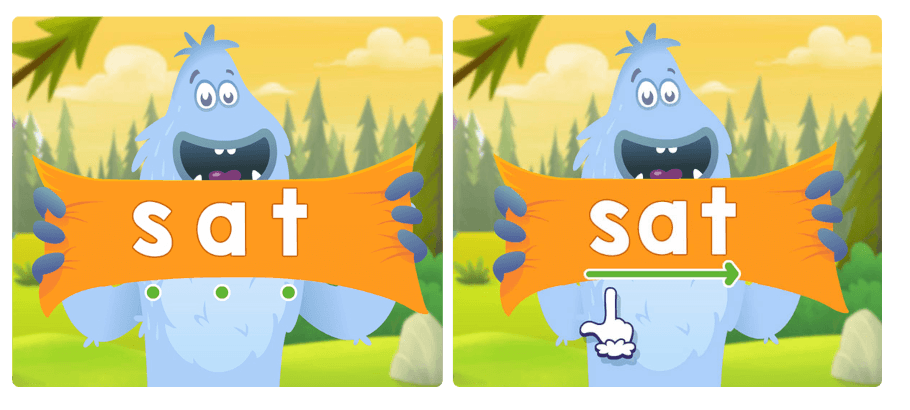
Because Fast Phonics and Reading Eggs use two completely different approaches and introduce phonemes in a different order, it is recommended that you do not use both programs concurrently.
Reading Eggs | Fast Phonics |
Structured literacy approach | Systematic synthetic phonics approach |
Initial focus on letter-sound correspondence, letter identification, onset and rhyme, segmenting and blending | Initial focus on grapheme-phoneme correspondence (GPCs), blending and segmenting phonemes |
Learn rhyming words and families | Learn phonemes, digraphs, trigraphs or split digraphs |
Uses picture cues to help students read | Uses syllable manipulation to read |
Focus on high frequency sight words | Focus on high frequency words, tricky words and pseudo-words |
Uses phonics books | Uses phonics decodable readers |
Reading Eggs or Fast Phonics: Which one best suits your class?
Still unsure of which program to use? This quick survey might help. Or download our Reading Eggs vs Fast Phonics flowchart.
Does your school have a focus on the initial sound in words when new phonemes are being introduced?
Do you encourage students to use other strategies when reading books, such as using picture clues?
Do you use analytic phonics and onset/rime – teaching students a word ending, such as ‘at’ and then working through a word family, such as c-at, b-at, m-at etc.?
If you answered ‘Yes’ to most of the questions above, then Reading Eggs is the program that will align to how you teach your students to read.
Here are more questions to help you:
Does your school use a systematic synthetics phonics approach?
Do your students read new and unfamiliar words by sounding out each phoneme and blending them through to read the word? For example, sounding out ‘c-a-t’ and blending through all three phonemes?
Do your students read books matched to the phonemes and tricky words that they have learned?
Do you introduce new phonemes at the beginning, in the middle and at the end of words?
Do you introduce multiple new phonemes to your class each week?
If you answered ‘Yes’ to most of the questions above, then Fast Phonics is the program that will align to how you teach your students to read.
If your answers are a mix of ‘Yes’ for both sets of questions, you might need to take a more in-depth look into Fast Phonics and Reading Eggs again to see which option you feel is the best fit. Or get in touch with one of our education specialists here for more guidance.
Progressing to Reading Eggspress
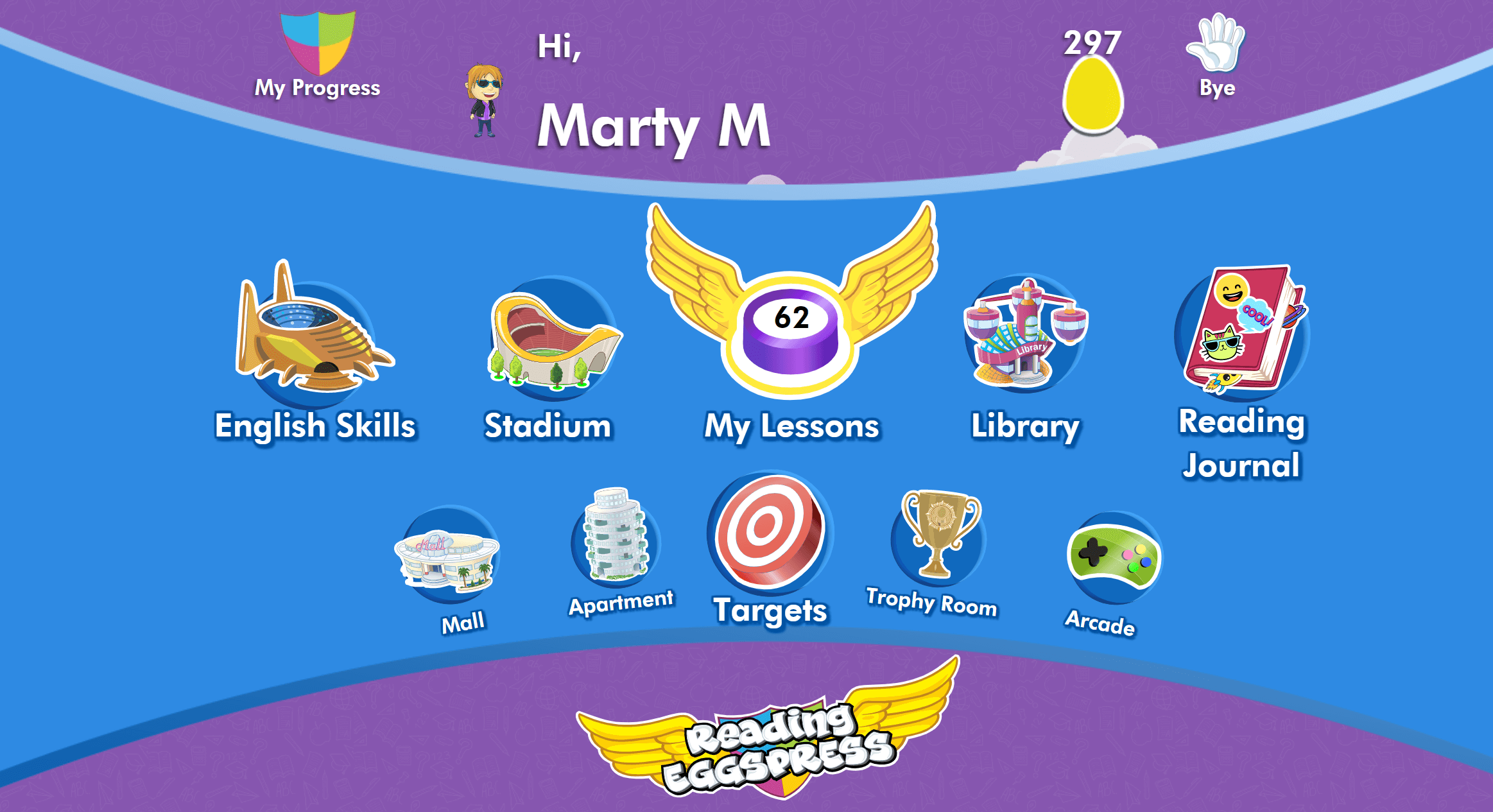
Once students are able to read independently, it is important to focus on comprehension skills, build up their vocabulary and develop their reading fluency.
Reading Eggspress is the next area, to support the development of these core skills, which we will explain further in another article.
No matter which phonics pathway you decide to go with for your literacy class, Reading Eggs’ full suite of programs offers you the teaching tools and learning resources you need, to ensure your students become successful and confident readers.
Remember, a Reading Eggs school account comes with three distinct programs: Reading Eggs, Fast Phonics, Reading Eggspress, plus a digital library of over 4,000 books
See why over 16,000 primary schools trust Reading Eggs to help their students learn how to read and read for pleasure.





